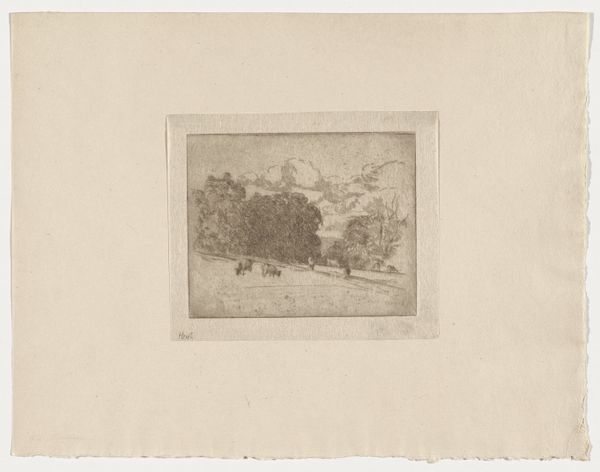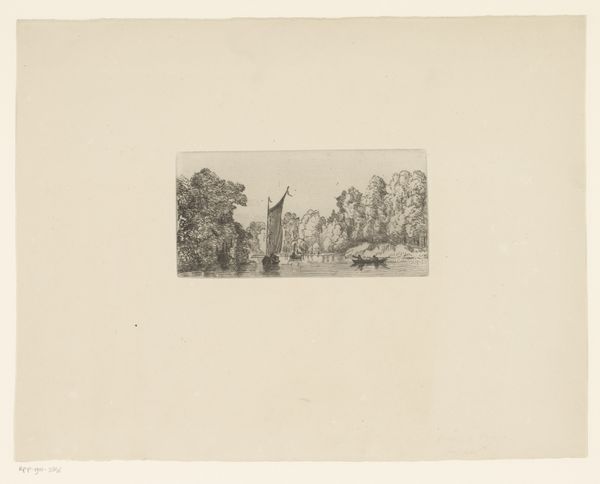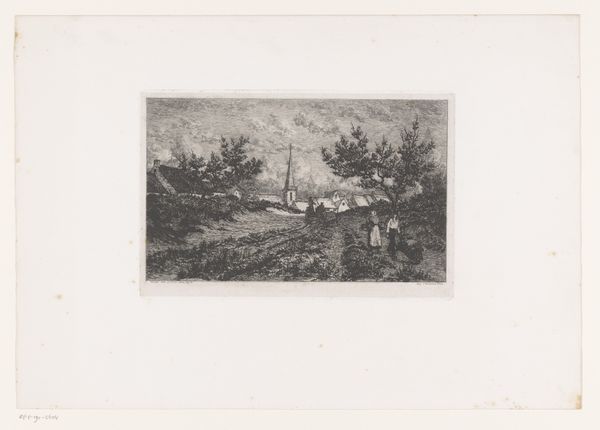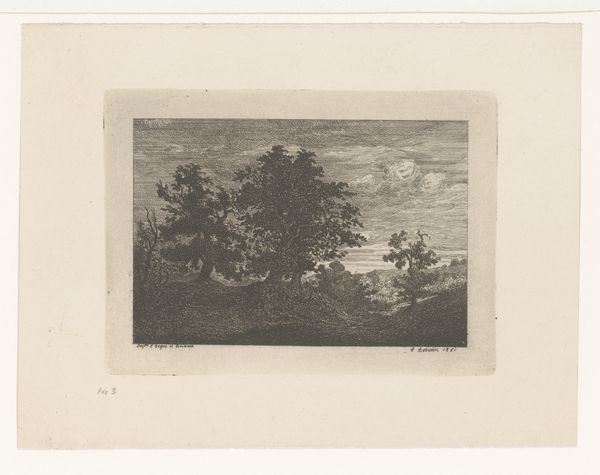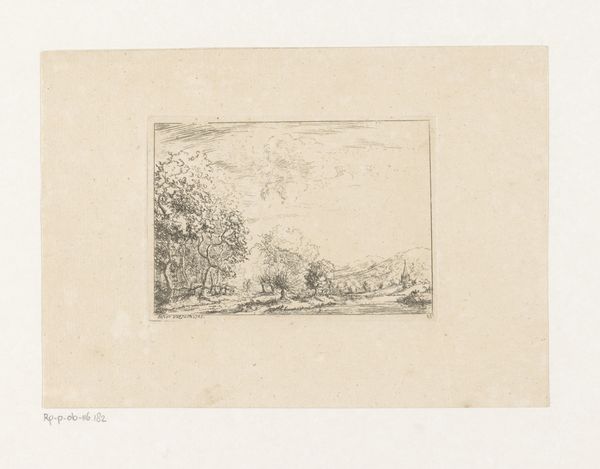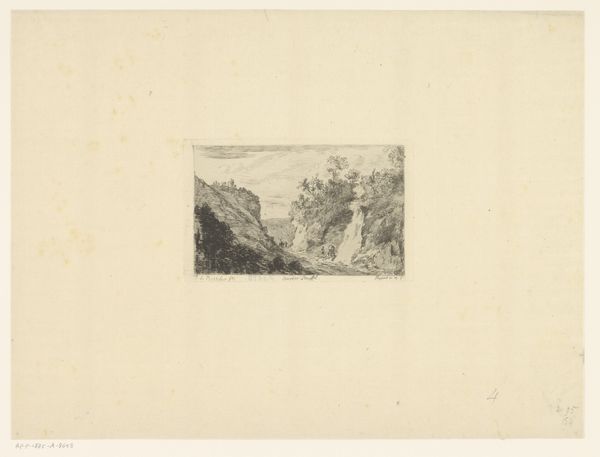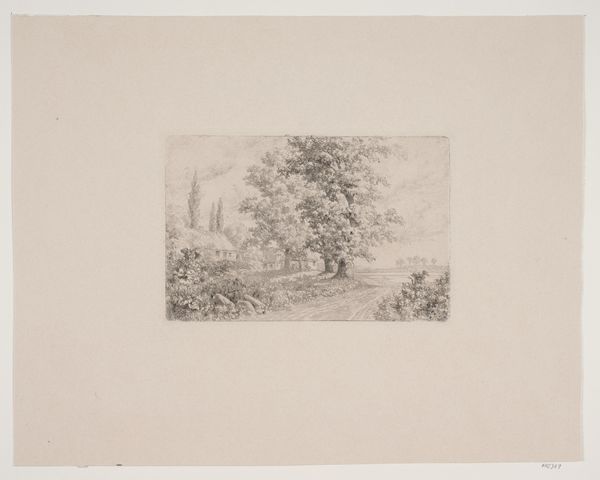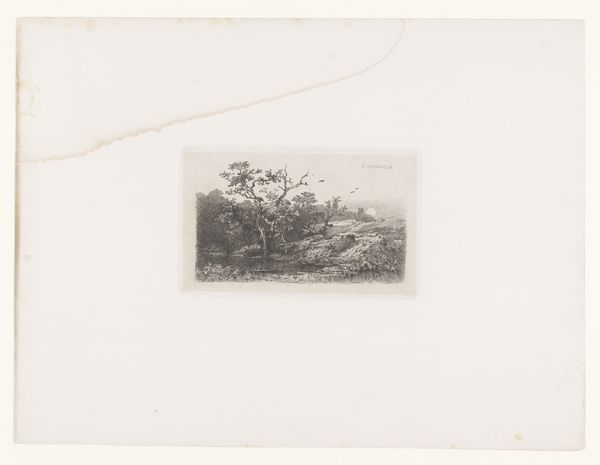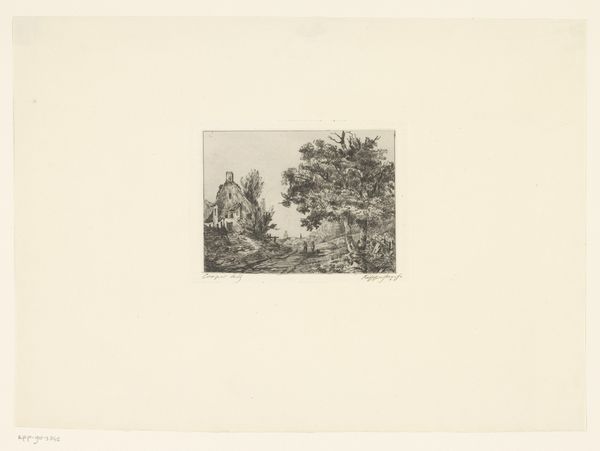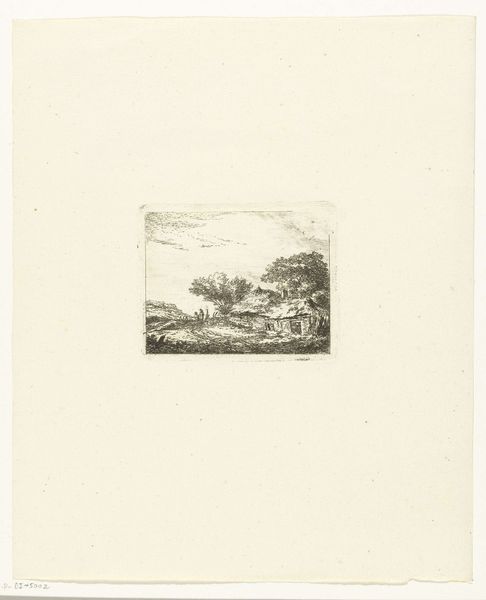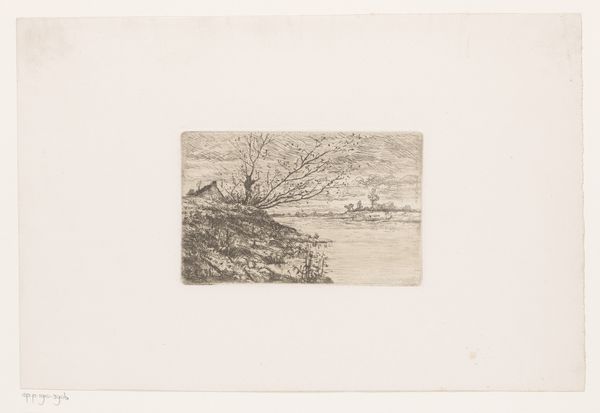
Dimensions: height 142 mm, width 180 mm
Copyright: Rijks Museum: Open Domain
Curator: Johannes Arnoldus Boland's etching, "Landschap met dorp," or "Landscape with Village," produced sometime between 1860 and 1900, offers a glimpse into a rural past. What strikes you about this image? Editor: Immediately, the contrast. The stark black lines against the pale paper give it a haunting, almost dreamlike quality. The scene feels both intimate and distant, familiar yet unsettling. Curator: Yes, Boland’s choice of etching as a medium is crucial here. Consider the labor involved. The artist would have meticulously drawn through a waxy ground on a metal plate, exposing it to acid, then inking and pressing it. This process speaks to the democratization of image-making during the period, as prints could be more widely distributed and consumed than unique paintings. Editor: I’m intrigued by how the village nestles under the imposing hill. It brings up questions of power, doesn’t it? The hill seems to loom over the village, almost a symbolic representation of the structures and systems governing the lives of the inhabitants below. The steeple emphasizes the dominance of religion in daily life. Curator: Precisely, the level of detail in rendering the textures - the foliage, the rough hillside, and even the subtle gradations in the sky - would have been very appealing for collectors. These images weren't just representations, but carefully crafted objects themselves. We see influences from Romanticism in the idealized landscape and a lean into Realism in its focus on this particular locality and natural phenomena. Editor: The prominent placement of that large tree seems significant too. Its placement feels deliberate, a reminder of nature’s enduring presence against the backdrop of human civilization. Is it protective or simply indifferent? Is there something to be read into its size, its species perhaps, in relation to the town? Curator: I see your point. Thinking materially, that dense foliage also complicates the etching process. Achieving such detail requires tremendous skill and multiple layers of biting to create depth and tonality. This isn’t just a reproduction of a scene; it’s a testament to Boland's expertise with the medium. Editor: Exploring the interplay between landscape, power structures, and the representation of labor helps uncover how images like these served cultural and, perhaps, political purposes in their time, or maybe it is just a nice rendering of an unperturbed, unknown small town from an era long gone by. Curator: It seems we can see something for both our own interpretations within Boland's craft, making the etching a powerful testament to his period's image making, from technique to meaning.
Comments
No comments
Be the first to comment and join the conversation on the ultimate creative platform.
